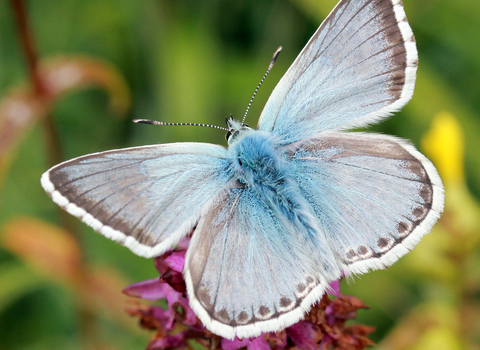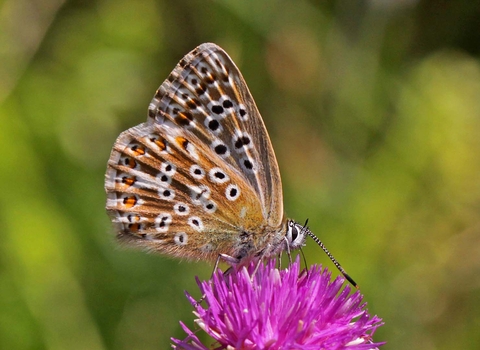
©Jim Higham

©Margaret Holland
Chalkhill blue
Unsurprisingly, the chalkhill blue can be found on sunny, chalk grassland sites in southern England. Clouds of this beautiful blue butterfly may be seen fluttering around low-growing flowers.
Scientific name
Polyommatus coridonWhen to see
July to SeptemberTop facts
Category
Stats
Wingspan: 3.3-4.0cmProtected in the UK under the Wildlife and Countryside Act, 1981.
